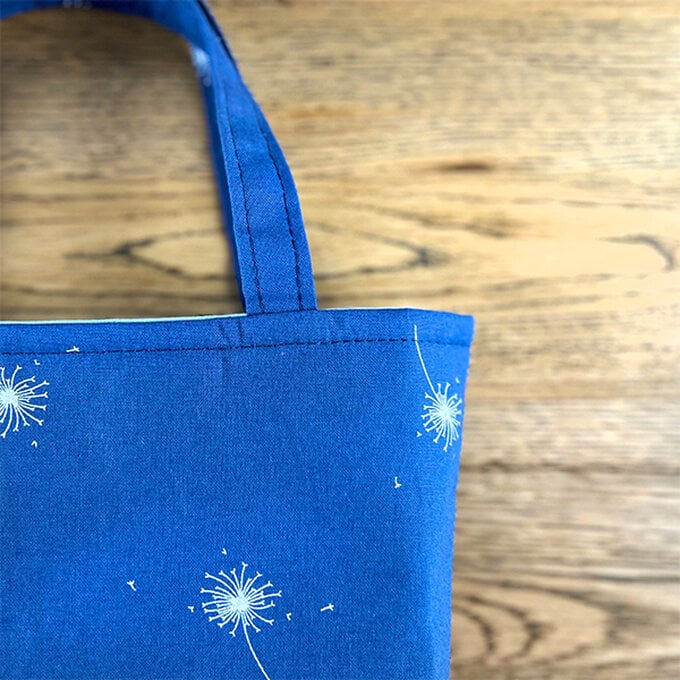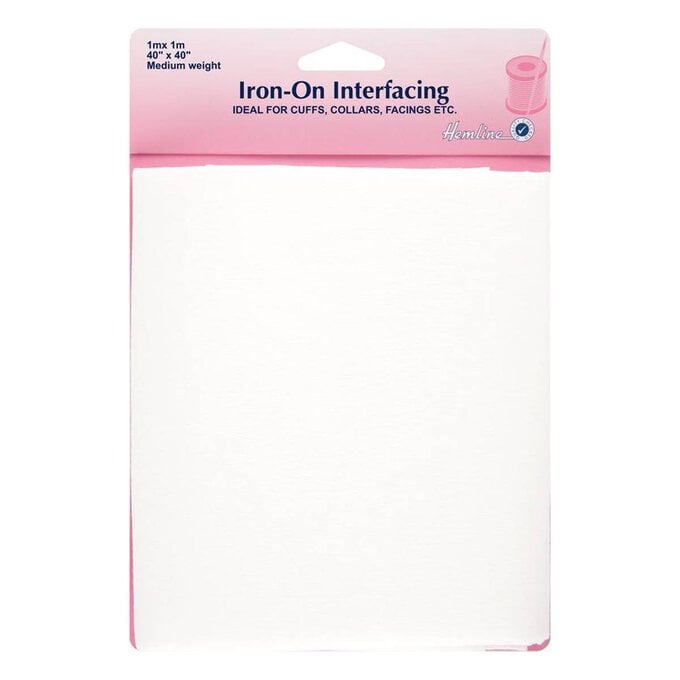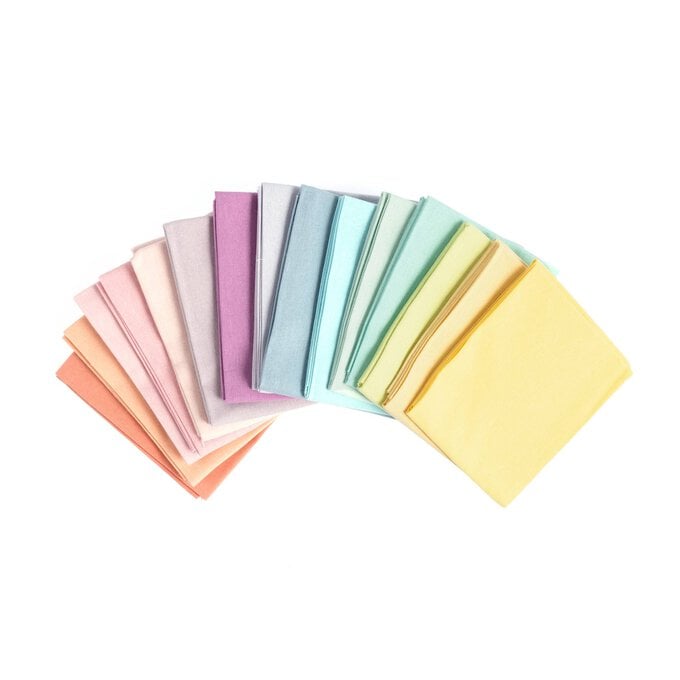How to Sew Fat Quarter Tote Bags
Create these super simple and structurally strong tote bags easily in any fat quarter pattern you like! These very staples are the perfect accessory and make great gifts.
Follow along with the step-by-step instructions below to learn how to make one. Why not make a matching one for a loved one?
Project and instructions by Hobbycraft Artisan Suzy Springall
You will need
Subtotal
Is $ 8.49
Subtotal
Is $ 38.00
Subtotal
Is $ 35.00
Subtotal
Is $ 15.00
How to make
Finished bag measurements:
Large: 48 x 33cm (approx.)
Small: 23 x 15cm (approx.)
* Sewing Machine
* Sewing Kit
* Dressmaking Scissors or Rotary Cutter and Cutting Mat
* Fat Quarters
* Iron-On Interfacing
* Iron
* Tape Measure

Begin by cutting your fat quarters/interfacing to the below sizes.
Large Tote
* x2 16 x 20" pieces (for the outer bag)
* x2 16 x 20" pieces (for the lining)
* x2 5 x 15" pieces (for the bag handles)
* x2 16 x 20" pieces of Iron-On Interfacing
Small Tote
* x2 8 x 10" pieces (for the outer bag)
* x2 8 x 10" pieces (for the lining)
* x2 5 x 12" pieces (for the bag handles)
* x2 8 x 10" pieces of Iron-On Interfacing
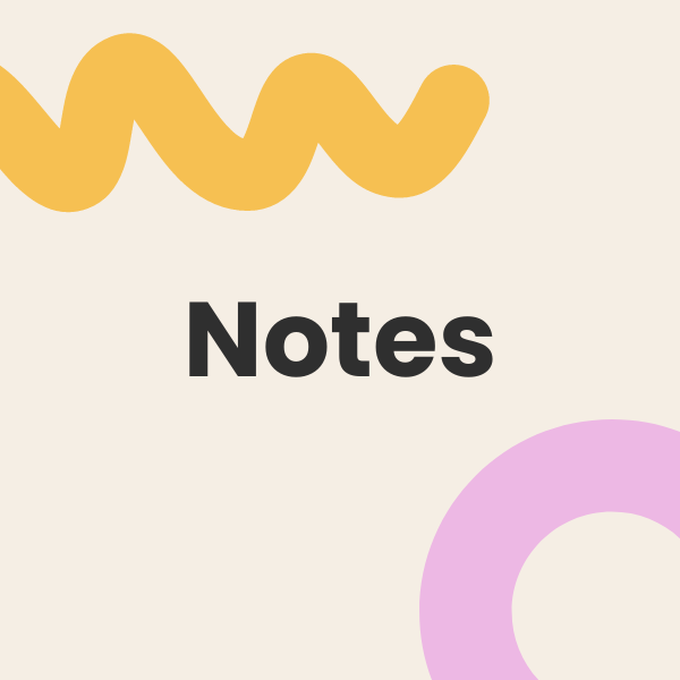
Fuse the iron-on interfacing to both outer pieces of fabric (be sure to press firmly rather than iron). Work on one section at a time, for 10-15 seconds, to avoid creating creases in the fabric.

To make the handles, fold both pieces in half lengthwise with wrong sides together. Press to create a crease along the fold. Next, open out the fabric and fold each edge into the centre crease and press again. Finally, fold the handle in half lengthwise ensuring the raw fabric edges are encased within the centre of the handle.
Top stitch along each long edge using a slightly longer stitch than normal (4mm).
Tip: A contrasting thread for the top stitching can add a striking detail to your bag.
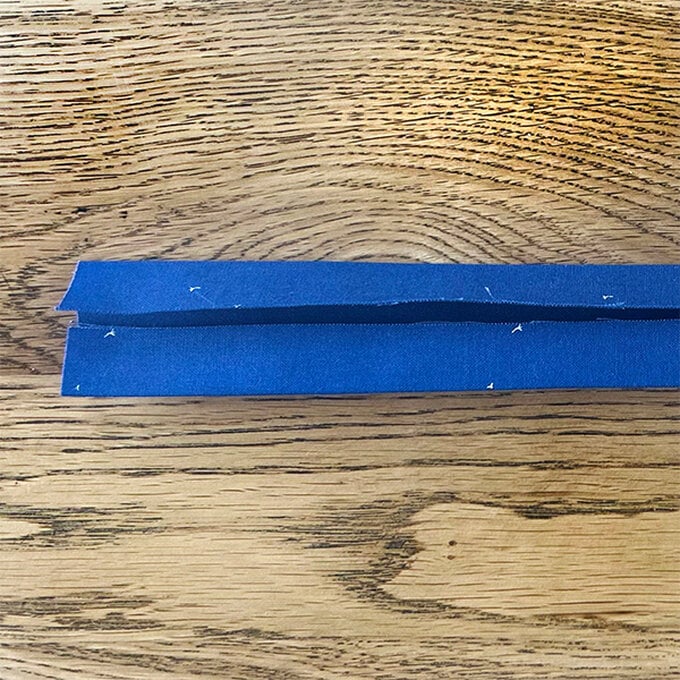
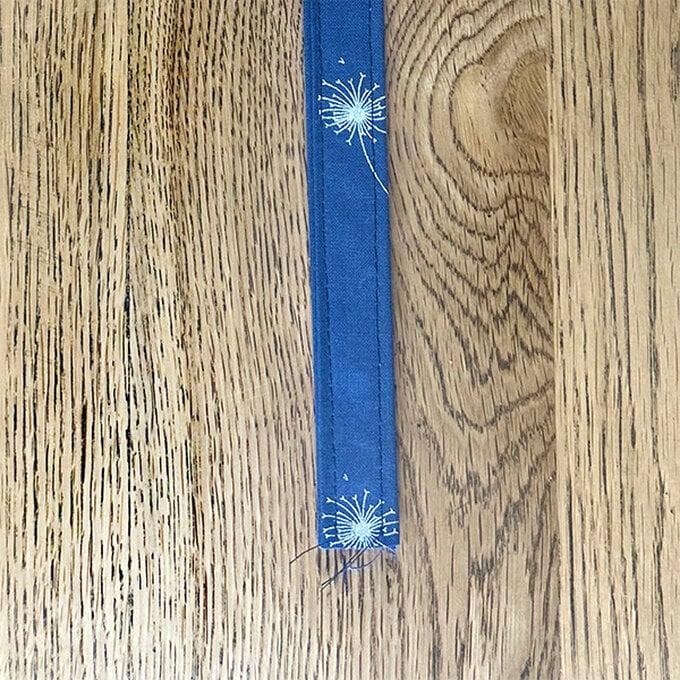
Fold the top edge of the outer bag in half (side edges together) to find the mid-point. Mark with a pin or erasable pen.
Place each end of the handle 3.5" either side of the centre point for the large tote bag and 2.5" in for the small tote bag.
Baste the handles in place.
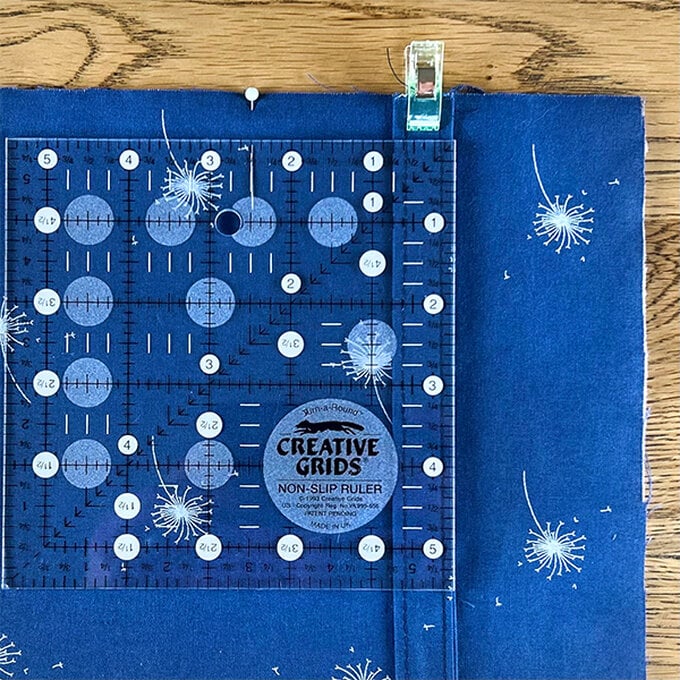
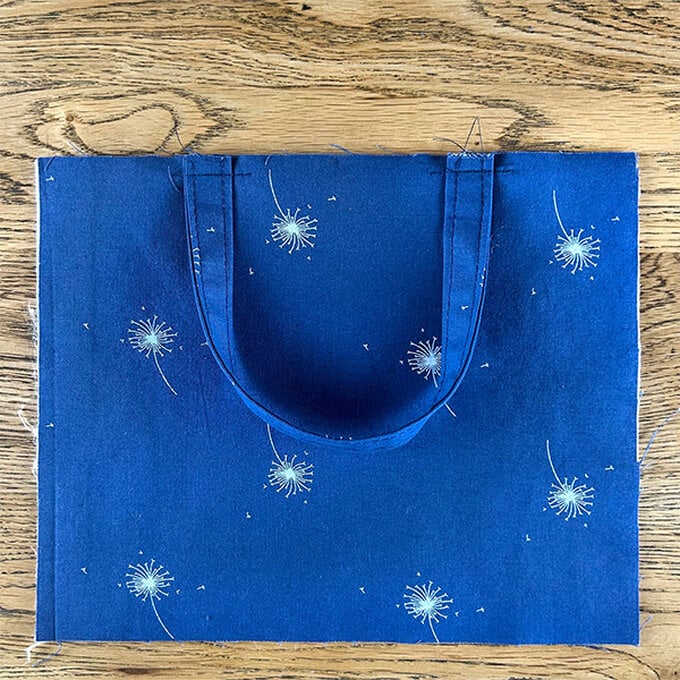
Lay both the outer panels right sides together making sure the side seams and handles are matched up. Sew along the sides and bottom using 3/8" seam allowance.
To create the boxed bottom of the bag, cut a 2" square from each bottom corner (as measured from the sewing line) for the larger tote bag and a 1" square for the small tote bag.
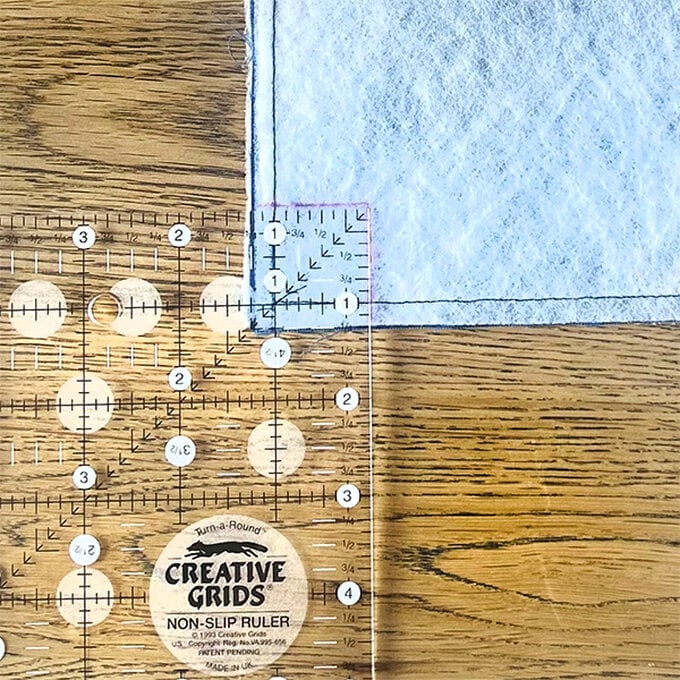
Match the side and bottom seam of the outer bag together and sew along the cut edge using a 3/8" seam allowance making sure to secure the beginning and end of the seam with a lock or back stitch.
Trim any excess fabric from the seams.
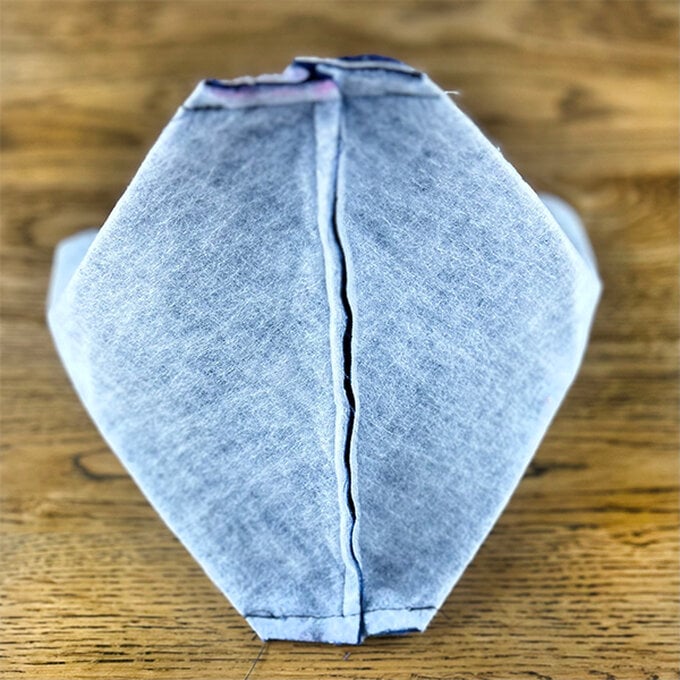
Lay the two lining panels right side together and mark 3/8" in from each side at the top. Mark half an inch in from each side at the bottom. Using an erasable pen, join the two lines down the length of each side. Sew along this line on each side. A slightly large seam allowance towards the bottom of the bag should help prevent a baggy lining.
Sew along the base of the lining using a half inch seam allowance making sure to leave a 4" gap (3" for the small tote bag) to allow the bag to be turned through later. Cut a 2" square from each bottom corner for the large tote (1" square for the small tote).
Trim any excess fabric from the seams.
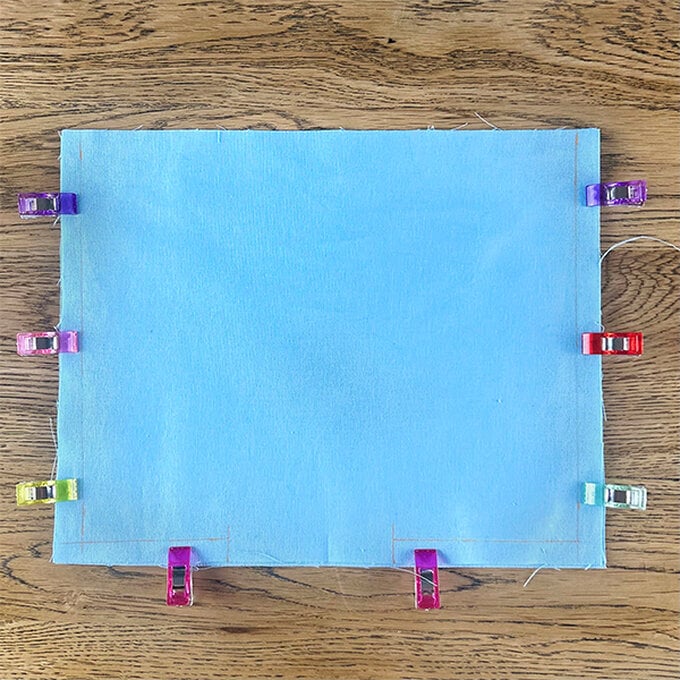
Place the outer bag into the lining with right sides together. Match the side seams of the outer and inner fabric and pin together all around the top edge. Make sure the bag handles are facing down towards the bottom of the bag.
Sew around the top of the bag using a 3/8" seam allowance.
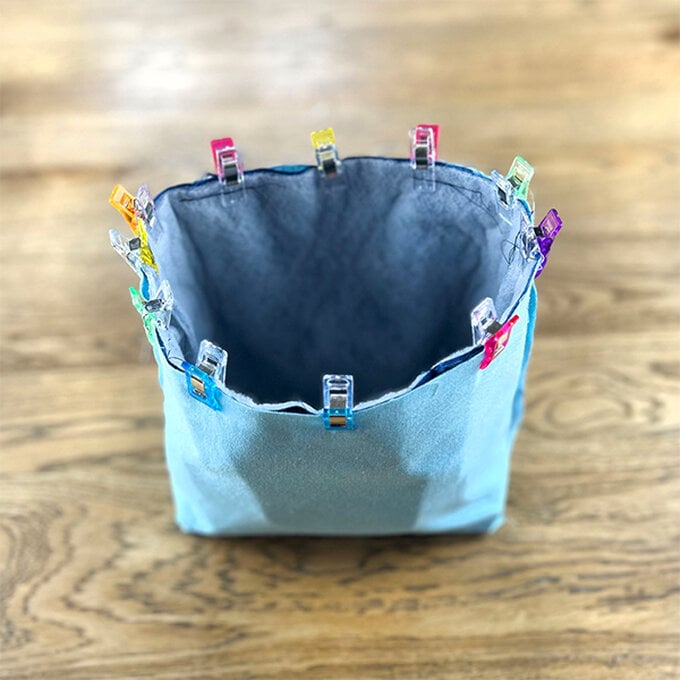
Turn the bag by gently pushing the lining and outer through the gap in the base of the lining (until both the outer and lining fabrics are the right way round). Push the lining into the bag outer and press, paying particular attention to the top edge. Top stitch around the top of the bag.
Close the gap in the lining fabric either by machine stitching close to the edge of the seam or by hand, using a ladder stitch.
